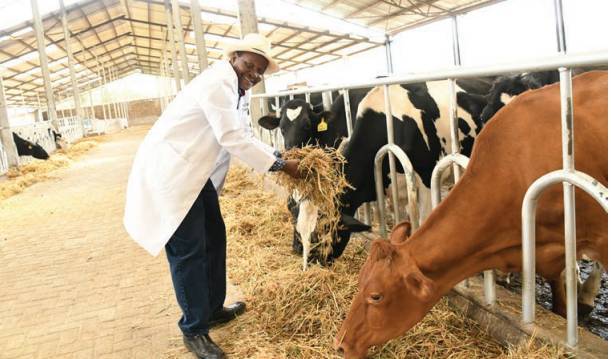Processors not to blame for woes of dairy farmers

Kingori Choto
Agriculture is a devolved function. Counties are tasked with regulating crop and animal husbandry, plant and animal disease control, fisheries, animal control, trade regulation, markets and cooperative societies.
All this have a direct bearing on the agriculture sector.
Counties have a crucial role to play in the development of the agriculture sector. But the sector has been struggling despite devolution bringing government services closer to the people.
Agriculture is yet to achieve optimal policy and regulatory traction at the county level. Overlapping national and county functions has been partly blamed for this.
This, however, does not exonerate counties from failure to address sector challenges.
Key sub-sectors like maize, coffee, tea, sugar and dairy continue to perform dismally.
Specifically, the woes facing dairy farmers reflect failure by counties to invest in small-scale production.
The International Fund for Agricultural Development has identified animal disease, low quality feeds, expensive technology and inputs, poor rural infrastructure, and lack of market access as the main bottlenecks facing dairy farmers in Kenya.
These are the real issues counties should be addressing. To be fair, some counties, notably Murang’a and Makueni, have taken steps to improve milk production by setting up dairy processing plants.
Incidentally, demand for milk and milk products has been on the rise. Data from the Kenya Dairy Board shows that in 2018 milk intake by processors grew by seven per cent, the highest in two decades. But milk processors take up less than 10 per cent of total milk produced, with the rest sold as raw milk.
Claims that milk processors are to blame for low milk prices are misleading. In 2018, processors absorbed 500 million litres against a total output of four billion litres.
Milk prices depend on market forces of demand and supply. Instead of politicising milk issues, county leaders should be tackling the structural issues affecting production.
In particular, counties should invest in lowering production costs, improving market access, supporting value addition, regulating farm inputs and reviving crucial services such as artificial insemination and other veterinary services.
Improving market access does not necessarily mean every county builds a processing plant. Instead, county governments should support farmers to form cooperative societies or revamp existing ones.
Counties adjacent to each other could jointly invest in one processing plant to convert excess output into milk powder thus ensuring price stability for farmers.
In addition, counties in milk-producing zones should form production hubs with cross-linkages in processing and marketing of the commodity.
They should also streamline marketing and build good road networks.
Partnering with national government to enhance milk production value chains will see lowering of cost of inputs, improvement of physical infrastructure and better access to domestic and export markets.
Trade barriers at the local level like cess or taxes on inputs, which hike the cost of production, should be reduced or eliminated altogether.
There is also need to reduce post-harvest losses especially during the rainy season when roads in many areas are impassable.
In addition, counties should support cooperatives and businesses engaged in processing and other value addition activities. Priority should be given to quality farm inputs – livestock feeds, fertilisers, foliage and animal drugs – to boost productivity.
Under the Agricultural Sector Transformation and Growth Strategy, counties need to offer incentives to farmer-facing small businesses involved in manufacture of farm input, value addition and veterinary research and service provision.
In summing, counties should focus on ways of improving the income and welfare of dairy farmers instead of blaming milk processors.
In any case, claims of market dominance levelled against some milk processors lack basis as they control only a small fraction of the market. — The writer is a lawyer and public affairs specialist— [email protected].













